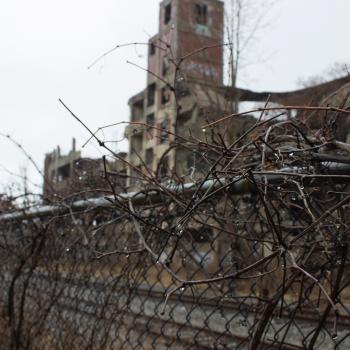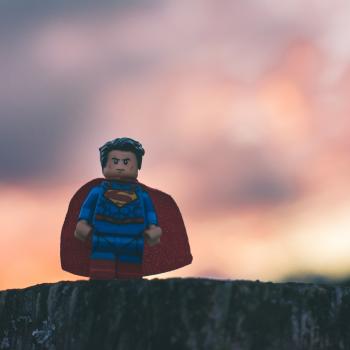 In 1993 my husband George Dardess began visiting our local Islamic Center: first to learn Arabic so that he could read the Qur’an, then cementing friendships with his teacher there and with the imam. So when the events of September 11, 2001 hit, George was in a position to join with members of the Center in presenting programs on Islam to the public.
In 1993 my husband George Dardess began visiting our local Islamic Center: first to learn Arabic so that he could read the Qur’an, then cementing friendships with his teacher there and with the imam. So when the events of September 11, 2001 hit, George was in a position to join with members of the Center in presenting programs on Islam to the public.
Our Islamic Center’s brave response to 9/11 was to open itself to the larger community—to invite Christians and others to learn about Islam, to observe the communal prayers, to ask questions. At the programs George, as a Christian, would dialogue with a Muslim on a topic like Jesus in the Qur’an, or Mary in the Qur’an, or the real meaning of jihad.
I accompanied George to the programs, which were often preceded by a potluck dinner, and it’s there that I met my first Muslim friend, Yasmin.
Yasmin would sit with me to introduce her friends. In the mosque’s small dining area (exactly like a church basement where dinners are held), the men and women sat at different tables. Though I’m a feminist, I actually enjoyed this segregation. We women could talk about juggling jobs and kids, or about the best public schools, or where to buy shoes.
Yasmin, an immigrant from Bangladesh, was then teaching chemistry at our local university. Her husband, also Bangladeshi, was an engineer. I was struck by Yasmin’s beautiful flowing clothes, her hijab always matching them. Later I learned that she made all her clothes.
Soon Yasmin left teaching to open a dress shop selling clothes she had made—in both Western and Muslim styles. Of course I went there one day to shop. What a surprise when she opened the door—and there she was hijab-less, her long hair lovely on her shoulders! That’s how I learned that Muslim women who choose to wear the hijab don’t wear it at home with their own family or when they’re just with other women.
Yasmin told me that she’d only recently decided to wear a hijab in public. “It’s for modesty,” she said, “and also to celebrate my Muslim identity.”
Meanwhile, as another response to 9/11, Yasmin and I and some other friends started a local chapter of the Fellowship of Reconciliation. So now she and I had a sort of “political” connection, too, as we all planned programs on nonviolence, tolerance, understanding the “other.” (Oh, how our country needs those programs today!)
During Ramadan, Muslims often break their daily fast together with a feast at someone’s home. Yasmin invited me to one of these dinners. I was the only non-Muslim there. And I thought: how important it is to feel sometimes in the minority.
It’s a taste of what immigrants to our country must feel—and of course African Americans as well. I sometimes think that a requirement for running for national public office should be to spend a week living in a community whose race or religion is different from yours.
(I also think a requirement should be to live for a month on the minimum wage—and no credit cards allowed—but that’s another issue.)
Through Yasmin and George, I befriended other Muslims: Yasmin’s husband and children, of course; the Islamic Center’s imam—mainly George’s friend, but such a warm person that he always includes me in the friendship; and other women: Sarwat (a physician) and her daughter Farsana (both of whom chose not to wear hijabs).
In 2005, George published his first book on Muslim-Christian dialogue: Meeting Islam: A Guide for Christians. Though the intended audience was Christians, some of our Muslim friends and acquaintances bought the book as well—to see what their faith looked like from outside it.
In preparation for his next book, Do We Worship the Same God? Comparing the Bible and the Qur’an, George organized a gathering of friends: half Muslims and half Christians. We sat in a circle and read aloud, from the Bible and then from the Qur’an, the accounts of Adam and Eve in the Garden. The Christians were astonished that there’s no “original sin” in the Qur’an’s version. Instead, after Adam and Eve eat from the Tree, they “slip” from the Garden (sura 2:35), and God forgives them!
We were all laughing (“You believe that?”) as we discovered how different the two accounts were. I remember the Muslim women laughing indignantly at how, in the biblical account, Eve is blamed for the Fall. Nothing in the Qur’an blames women for humankind’s faults.
Every Muslim worldwide is required to make the Hajj pilgrimage to Mecca once in her or his life (health and finances permitting). Around 2006, Yasmin and her husband and two teenage kids made the Hajj. It was a huge adventure for them, requiring about a year’s planning. When they’d returned home, George and I had them over for dinner. (Of course I adhered to Muslim dietary restrictions: no pork, no alcohol.)
Over dinner, they excitedly recounted details of their experience. And they’d brought a gift: a medal inscribed with the ninety-nine names of God in the Qur’an. These names are precious to Muslims, who refer to them as the Beautiful Names.
The Beautiful Names became the inspiration for the book that George and I later wrote together: Reclaiming Beauty for the Good of the World: Muslim & Christian Creativity as Moral Power.
All this leads me to muse on how life constructs its paths. If George hadn’t wanted to learn Arabic nearly twenty-five years ago, nothing that I’ve written in this post would have happened. What richness would have been lost, or never even found.

Peggy Rosenthal is director of Poetry Retreats and writes widely on poetry as a spiritual resource. Her books include Praying through Poetry: Hope for Violent Times (Franciscan Media), and The Poets’ Jesus (Oxford). See Amazon for a full list. She also teaches an online course, “Poetry as a Spiritual Practice,” through Image’s Glen Online program.
The above image is by Rik Wouters, [Public Domain], via Wikimedia Common
















